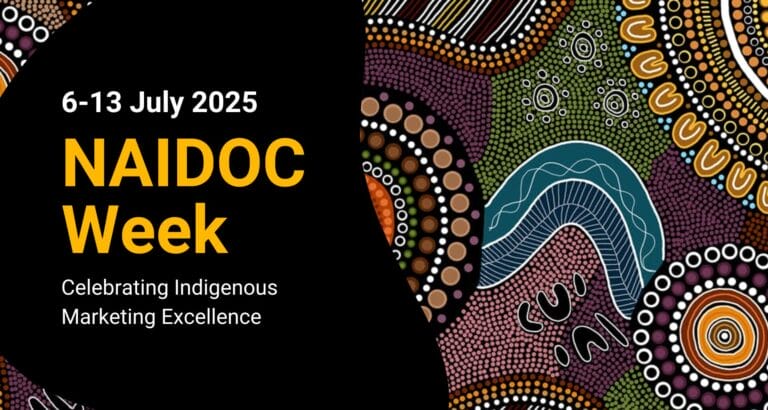Introduction
Continuing on with our MozCon series where we discuss some of the most influential and informative presentations that we attended at the MozCon 2019 Digital Marketing conference in Seattle, Washington. In this week’s blog post we will be discussing Christi Olson’s presentation on ‘What Voice Means For Search Marketers: Top Findings From The 2019 Report’
WHO IS CHRISTI OLSON?

Before jumping into her presentation, we would first like to introduce Christi Olson. Christi is the Head of Evangelism for Bing at Microsoft. With over a decade of digital marketing experience, she has led numerous digital marketing teams from Microsoft, Expedia, Harry & David, Pointmarc and Point It. With a strong passion for search marketing, particularly in voice search optimisation, Christi has spent her career helping many businesses solve their marketing challenges and goals with her thorough analytical skills to provide actionable insights and strategies.
NOW FOR THE PRESENTATION DETAILS
Christi Olson gave the audience the down-low on what you need to know about voice search today and how what we, as digital marketers should consider for next 5 years from a study they conducted at Microsoft.
She announced that her presentation, ‘What Voice Means for Search Marketers: Top Findings From The 2019 Report’ will provide us her top tips on voice search optimisation and cover 3 sections of the Microsoft’s ‘Voice Report – From answers to actions: customer adoption of voice technology and digital assistant’
The 3 sections that are covered in the presentation are listed below:
- Informational
- Navigational
- Transactional
STARTING THE PRESENTATION – VOICE SEARCH FOR MARKETERS
The presentation started with the power of voice in the early stages of our lives. Using her newly born daughter as a wholesome example of how voice, even before birth, can have a significant influence on how humans connect with one another.
This connection is further facilitated by technology and Artificial Intelligence (AI) today. Where by the point, that the common behaviour of typing is transitioning to voice activation and natural language processing in a more conversational approach by the AI in many common devices available today.

This emerging behaviour presents a great opportunity for digital marketers and businesses alike the opportunity to enhance their current search marketing strategies to reach potential leads. Furthermore, with the new Digital Assistant (DA) tech and devices such as Cortana Smart Speaker or Google Home to provide searchers verbal responses that is far more accessible than the 10 blue links that we are so familiar with on the Search Engine Results Pages (SERPs).
![]()
VOICE SEARCH
![]()
Christi announced that from her study of 5000 people from countries around the globe including the United States, United Kingdom, Canada, India and Australia, 69% of them said they have used the voice search function on a DA. Furthermore, this study found that 75% of households will have at least one smart speaker by 2020 and within the next 5 years over 50% of consumers are expecting their DAs to assist with processing payments and making purchases.
Christi then referred to a personal story of how her son, Roy – at the age of 1, was able to add cookies to her family’s weekly grocery shopping cart, demonstrating just how simple voice search can be integrated in our daily lives.
But what does this all mean? This voice search behaviour changes the way searches are performed. It introduces an alternative approach in the retrieval and provision of relevant information.
This can be narrowed down to the search intent and how it is shifting from seeking information to requesting actions. However, these actions are not the actions that invoke particular demands, but more so actions that requests information that can be incorporated seamlessly into their lifestyle.
Christi provided the audience with the following examples:

These examples will typically return users with a spoken answer in a conversational manner from their DA. However, Christi did clarified that voice search may differ on devices with dual systems such as mobile devices where by the results from your smartphone can be provided verbally as well as be displayed on the screen on the SERPs. This is an important consideration as we will discuss later in this blog post.
This then provides digital marketing specialist and businesses an opportunity to discover ways to utilise this search behaviour to generate a connection with users in a unique and more engaging manner.
VOICE SEARCH OPTIMISATION
Christi shared a statistical figure from a study conducted by Stone Temple – a renowned SEM firm in Boston, and revealed that 40% of voice search results are coming from featured snippets. This suggests that in order to capture 40% of the voice market it will require optimising for featured snippet, especially for those seeking answers about products and services.
Here are Christi’s top 7 tips on how to optimise for featured snippets:
1. Find your top ranking queries:
Christi highlighted that the contents on your website is really only eligible for a feature snippet if they rank in the top 10.
2. Identify questions related to that query:
From your top ranking content, it is essential to identify and understand the questions associated to the queries and your website content. Although Christi mentioned there aren’t currently any specific tools that focuses on ‘voice state queries’, she suggested there are alternate methods to retrieve specific keywords that can provide some useful insights on how users may ask questions.
She recommended using Google Search Console and Google Analytics to identify specific queries.
3. Structure your answer:
When addressing users’ search queries, Christi indicated that these queries will typically take form of a question and therefore suggested our content should provide information as answers with a conversational tone.
She recommended utilise a free visual keyword research & content ideas tool – Answer the Public. As there are many ways to organise your website’s content to increase the likelihood if being displayed in featured snippets, Christi emphasised that it is more likely for sentences and paragraphs to be spoken when DAs delivers user’s voice search results – at least more than lists and even more so over tables.
4. Ensure your answer is valuable and straight-forward:
Christi clarified that voice search answers are typically concise yet valuable. She suggested that this should be reflected in your website content.
5. Incorporate natural speaking tone:
As previously started, these voice search answers is best spoken in paragraphs. Therefore, these sentences should incorporate a natural speaking tone.
Voice search involves having to verbally communicate queries – that are under most circumstances colloquial in nature. In order to enhance users’ satisfaction it would be appropriate to ensure DAs respond in a similar manner.
6. Consider character count:
Another valuable tip is to consider the character count of your answers. As voice search is most commonly performed on smartphones and smart speakers, it would be imperative to consider the devices ability to display search results.
For instances, if search was conducted on your smartphone the likelihood that a featured snippet displayed on mobile SERPs will have less real estate in comparison to a standard desktop monitor. Therefore, with such this limitation, Christi suggested this will contribute to how DAs on these smartphones will verbally deliver voice search results.
7. Ensure traditional SEO is included:
Whilst having to seek opportunities to optimise for voice search, Christi explained that although voice search may change the way search is performed, it does not mean search is going away all together.
As we ensure that the content of our website increases in exposure via search engines, we as search marketers must not forego the importance of SEO.
3 KEY TAKEAWAYS FROM THE 2019 VOICE SEARCH REPORT
To conclude her presentation, Christi summarised her presentation to provide the audience 3 key takeaways that can be found in her study.
Informational
The first key message Christi discussed in her presentation is information. There are many types of queries being searched every day, they do note vary all that much.
Essentially, all these queries have the objective to seek information. Christi shared with the audience that 68% of people who performed a search is trying to find a quick fact or information.
Furthermore, although these search results can be retrieved from featured snippets, these results are also being pulled from knowledge graphs, optimised sections, schemas that contain conversational tone.
However, nothing sprung out more than page speed for Christi. As a page speed is a ranking factor, it provides the fundamental value of delivering answers and information to users in an efficient manner through numerous channels.
Navigational
The second key takeaway message Christi summarised in her presentation is the shift in search intent when users perform voice search. As previously mentioned, voice searches have a more unique approach when seeking answers. Earlier in this blog post, we explained that these voice search queries are characterised by actions and request information that can be incorporated seamlessly into peoples’ lifestyle.
For example, Christi shared some statistics and revealed that 65% of people use voice to get directions and 48% of people use voice to search for a business.
This places great importance to local search optimisation, where by local directories; local content and the ‘Expertise- Authoritativeness-Trustworthiness’ (E-A-T) metrics will contribute to your voice search optimisation.
Transactional
The final key takeaway Christi had shared with the audience is ‘vcommerce’, otherwise known a voice-ecommerce. This is quite similar to the visual search optimisation opportunities discussed in our previous blog post, MozCon 2019: Joelle Irvine – Image & Visual Search Optimisation Opportunities, where by it provides digital marketers and business an alternate avenue to further increase their business and brand exposure to entice potential customers to convert and make a purchase.
This key takeaway is strongly associated with the previous one – Navigational, where by local search optimisation for voice search can be considered as precedent step to a conversion funnel for users to make a purchase – or with relevance to a more contextual example a reservation for a local restaurant.
Furthermore, Christi highlighted that chat-bots can provide us with guidance in how we may conduct our voice search optimisation activities. She explained that the framework for chat-bots resonates closely with a lot of traits discussed in the blog posts.
Chat-bots are engineered and designed to ensure users receive the right information and answer in a short, conversational manner with the objective to encourage users to ultimately complete a transaction.
WHAT CAN WE TAKE FROM THIS PRESENTATION?
As voice search continues to seamlessly integrate themselves into our everyday lives, Christi’s presentation announced that voice search is not an emerging trend, but rather that is already here. She provided the audiences with a number of findings from her Microsoft Voice Search 2019 Report as well as a few personal stories to bring forth a number of ways that SEOs, digital marketing professionals and businesses a like can stay on top of voice search. She has provided us with 7 highly insightful voice search optimisation tips and concluded with 3 key takeaways that harmoniously intertwine with one another that is highly insightful.











